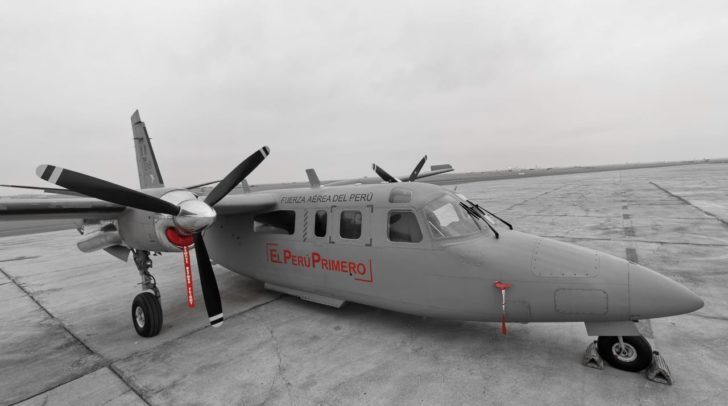
Peru boasts the tenth highest commercial airport in the world, and four of the top 20. The country has beautiful mountains, lush rainforests, busy cities, and impossibly remote regions. It’s a challenging operating environment for any airplane, but one Twin Commander is thriving in this dynamic place.

The Peruvian Air Force operates a 1971 690B, serial number 11391. The airplane was privately owned, but was seized in a clandestine operation against drug traffickers in 1993. Since 1997 the Air Force has put it to work doing everything from more anti-narcotic missions to surveillance and VIP transport.
Lieutenant Colonel Alfredo Quiñones Belevan has been in Peru’s Air Force since 2003, and has been flying the Twin Commander since 2014. “It is reliable and made for all the lands of Peru,” he said. He and the other pilots in the unit praise the airplane for what it can do. “The Commander is an extremely versatile aircraft, capable of maneuvering in an unthinkable way for an airplane of its kind.”

Lieutenant Colonel Alfredo Quiñones Belevan, Fuerza Aéro de Peru
For many years the airplane sat, underutilized. Like many assets that are gained via possession as a result of an illegal activity, the government didn’t see an important need or use for the airplane. Quiñones said that for many years it was considered an unimportant airplane and was only used for VIP transport. But then it was modified for aerial photography and its missions began to expand.
Today the unit flies reconnaissance, photography, aeromedical evacuations, VIP transport, and as a lure in anti-drug trafficking. That’s an incredible range for one aircraft. Most militaries would have three of four different airframes for such a wide variety of requirements.
Most of the mission versatility is evident in interior configurations. For aerial photography the seats and carpet are removed, and the sensors are installed. For medical evacuation side seats are installed, leaving room for a stretcher, equipment, and medical personnel.
Aerial photography and mapping are some of the Twin Commander’s most important work. A photo port was installed, and in that port the crew uses a variety of sensors. They include the ADS80 digital camera and ALS70 Lidar sensor. Lidar uses lasers and then compares the various times in transit to produce detailed three-dimensional images that show everything from people to archaeological sites.

Mission versatility may be the biggest benefit to the operator, but for the pilots it’s what the Twin Commander can do in the air that gives them the most pleasure. Quiñones said they operate the aircraft at Juliaca Airport, elevation 12,252 feet, and its high-altitude capability also comes in handy when crossing the mountains. Quiñones explained that in Peru most aircraft are forbidden from crossing certain mountain ranges at night. The Twin Commander is approved to do so because they were able to demonstrate it can continue safely over the top on one engine. “For many it’s unthinkable when they see the size and shape of the airplane,” he said. That permission once enabled Quiñones to fly at 29,000 feet, crossing mountains as high as 22,205 feet, to evacuate a police officer from the jungle who had been injured on the job. The officer was unconscious and they knew every minute of delay was critical.
Quiñones also praises the airplane’s ability to bank aggressively, which has cut down on their surveillance and mapping time. “To be a passenger transport plane and able to turn with more than 60 degrees is something that is not seen every day,” he said. The maneuverability is what initially convinced the authorities to adapt the airplane to a broader range of missions. They have mapped the coast for port studies, evaluated rivers, and done topographic surveys in the jungle for new road construction.
Many owners would recognize the panel. Quiñones said it is mostly stock, with the addition of a Garmin GTN 650 touchscreen navigator, an Aera GPS, modern weather radar, and the hardware necessary to operate the camera system and other sensors used on their missions.

In a country about twice the size of Texas, it’s no surprise the flying hours rack up. Quiñones said that he flies about 100 hours a year, as do the four other pilots in the unit. That sort of utilization shows how valuable the Twin Commander is to the country’s Air Force.
Although some training is done in-house, the pilots also attend Simcom in Orlando. But for what the pilots of the Peruvian Air Force do with the Twin Commander, much of the flying has to be learned on the job. “The plane behaves of 1,000 wonders,” Quiñones said.

